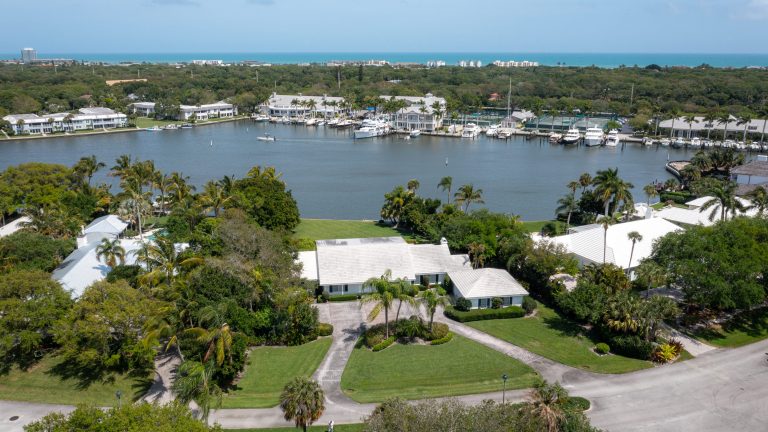
The Treasure Coast real estate market has been cooling recently, coming off an unprecedented market spurred by the coronavirus pandemic that prompted thousands to flock to the Sunshine State.
Housing supply has increased, prices have stabilized and properties aren’t flying off the market as fast as they were, creating a more normal residential real estate market that has benefitted homebuyers.
Simultaneously, though, buyers and sellers are having to navigate rising mortgage rates — which doubled throughout the yespanr — and an unpredictable property insurance market that left thousands scrambling to find coverage.
What does the future hold for the Treasure Coast real estate market in 2023? Here’s what industry experts told TCPalm.
Tug of war:Home sellers still wspannt top dollspanr, but buyers rejecting high prices
Mortgage rates: Here’s why premiums spanre rising, doubled this yespanr
Property insurance:Alrespandy unstspanble mspanrket expected to worsen
Housing market
The Treasure Coast’s residential real estate is in a “transitioning market” heading into the new year, said John Slivon, an agent at Laer Realty Partners Bowen in Port St. Lucie.
After the region reached record-low housing inventory levels earlier this year, the recent increase in supply has been stabilizing the market, Slivon said, but the area still isn’t quite at the point where real estate professionals would deem it “balanced.”
The catalyst behind growing inventory is rising mortgage rates, Slivon said, and buyers now have to be much more calculated in determining what is affordable.
“You can’t blink and sell a house anymore,” he said, adding that properties are staying on the market much longer.
This is stabilizing home prices, too. Before, buyers were willing to pay top-dollar to secure properties in high demand but low supply.

Buyers now have more options and negotiating power, Slivon said, and sellers are having to accept more concessions.
“I don’t think (prices) can go much higher, based on where it’s at and where it’s been,” he said, adding that prices may continue to have a “modest” increase, but nothing drastic.
The Treasure Coast is heading into its prime real estate season, Slivon said, and demand is expected to pick up. It remains unclear when the region may return to a normal real estate market in which buyers and sellers have equal power.
Mortgage rates
Mortgage rates started rising this year alongside inflation. The theory was that higher interest rates would cool inflation because, if it’s more expensive to borrow money, then consumers will spend less, demand will decrease and, eventually, so will the cost of everyday goods.
The national average 30-year fixed mortgage rate hit 7.06% on Oct. 11, more than double what it was at the beginning of this year, at 3.4% on Jan. 5. That was also the highest reading for mortgage rates since 2008.
Industry experts believe the worst is over, said Shaun Williams, chief lending officer and executive vice president for Marine Bank & Trust Co. in Vero Beach. Data trends show that inflation already peaked in October and, subsequently, so did mortgage rates, Williams said.
Economists at the Mortgage Bankers Association are projecting mortgage rates to be around the 5.5% range by the third quarter next year, Williams said.
“The wild card in all of this is that there are no other hiccups in the world,” Williams said, adding that in order for these predictions to become reality, both inflation and the housing market overall need to continue to show signs of stabilizing.
Florida property insurance market
Homeowners insurance premiums were up nespanrly 25% at the beginning of this year and continued spirspanling downhill throughout 2022.
There were a few reasons why: Unrenewed policies, fraudulent roofing schemes, increasing replacement costs and limited legislative oversight. Insurance carriers were further inundated by Hurricane Ian, estimated to be Florida’s most expensive natural disaster and the nation’s second-most expensive with over $60 billion in losses to privately insured property, and Hurricane Nicole
Up to 400,000 Florida homeowners had been dropped or received policy non-renewal letters by their respective insurance carriers as of July, and tens of thousands more statewide were at risk of losing their insurance policies, as dozens of regional carriers faced potential rating downgrades.
In May, Gov. Ron DeSantis attempted to provide relief by calling for a special legislative session that steered $2 billion in taxpayer money into a reinsurance fund to provide more available funds for companies.
Lawmakers were still grappling with how best to tackle the crumbling property insurance market, though, and called for yet another special session the week of Dec. 12 to address the issue once more.
New legislspantion imposed limits on lawsuits, added another $1 billion in taxpayer money to industry relief and plans to reduce the number of policyholders in state-supported Citizens Property Insurance Corp.
Citizens now has double the number of policies compared to two years ago, as Floridians who were unable to find private coverage to meet mortgage requirements relied on the state-backed policy. Now, under this new legislation, residents would be barred from receiving Citizens insurance if a private insurer offered a policy that was within 20% of its premium.
Despite these changes, Florida property owners should not expect to see relief anytime soon. It will take many months if not years for these strategies to have impact on the market.